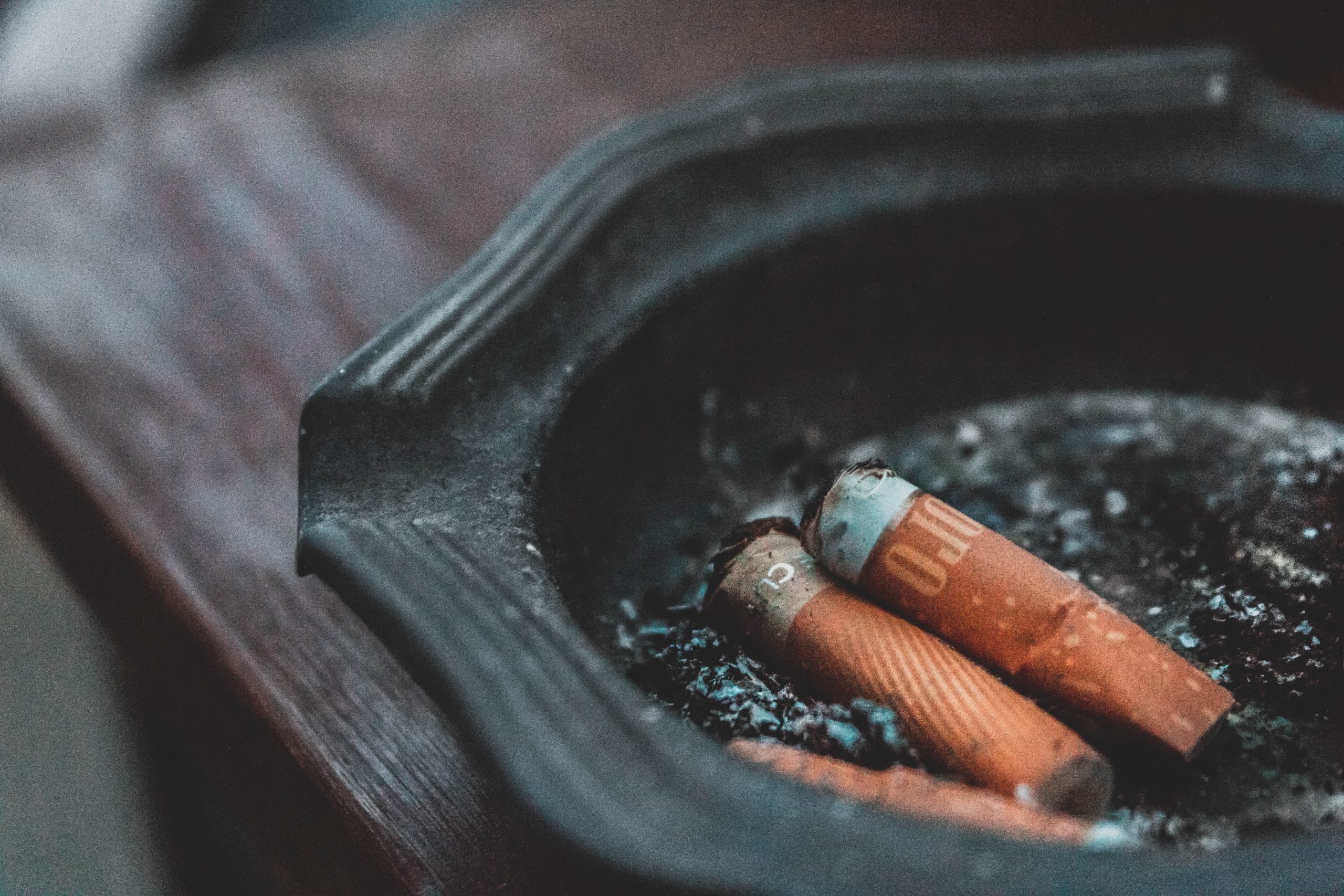The Time To Quit Smoking is Now
 Smoking and the Immune System
Smoking and the Immune System
Many common viruses, such as influenza and COVID-19, attack the respiratory tract and can make a person sick. Smoking decreases the antiviral factors in the lungs, leaving individuals who smoke or people who are exposed to high levels of smoke, more susceptible to viral infections [1]. New studies have shown that those who smoked and contracted COVID-19 were 1.4 times more likely to have severe symptoms and approximately 2.4 times more likely to be admitted to an intensive care unit, need mechanical ventilation or die compared to non-smokers [2,3]. These studies show that quitting smoking is an important way to keep your immune system strong.
Obstacles to Quit Smoking
Quitting smoking is no easy task: It takes incredible will-power, discipline and strength. Some of the biggest obstacles to quitting smoking are dealing with cravings and nicotine withdrawal. Nicotine, the addictive substance in cigarettes, can rewire the brain so that a person keeps wanting to go back to smoking. Certain cues can make a person have stronger cravings. Another obstacle to quitting smoking is nicotine withdrawal. After 4-24 hours of not having nicotine, the body can react. Symptoms of irritability/anger/frustration, anxiety, depressed mood, difficulty concentrating, increased appetite, insomnia, constipation, dizziness, nausea, and sore throat are common in nicotine withdrawal [4]. Luckily, all these symptoms can be managed and typically decrease and stop 2-3 weeks after quitting. If you are considering quitting smoking there are several steps you can take to help prepare yourself for success.
5 Tips to Help You Quit Smoking
Here are 5 helpful tips to get you started on quitting smoking…
1. Write down the reasons why you want to quit
Quitting smoking will take willpower and motivation. Writing down the reasons why you want to quit can help encourage you to take the first steps, and are great to refer back to to keep you motivated.
2. Avoid Triggers
Before quitting, take some time to record your smoking habits. Write down when you are smoking, and identify what makes you want to have a cigarette. Some common triggers may be stress, drinking alcohol, coffee, driving, break times or social gatherings. Another common trigger can be things that remind you of smoking. On your quit day, get rid of all cigarettes, ashtrays and lighters. Try cleaning your house, clothes and car to avoid smelling the cigarette smoke which can lead to temptation. Avoiding triggers can often mean changing up your routine, be flexible in your schedule while you are quitting.
3. Find Support
Telling your friends and family you are going to quit is a good idea. They can help encourage you when things are getting tough and help keep you accountable. Reach out for support from counsellors, doctors (including naturopathic doctors), or online support if you feel like you are struggling.
4. Exercise
Exercise has not only been shown to increase motivation for people to stop smoking, but it has also been shown to help reduce cravings and increase the likelihood of quitting [5]. Try to do some exercise daily, especially when experiencing cravings, to help improve your chances of quitting.
5. Take some deep breaths
Deep breathing has been shown to help reduce smoking withdrawal symptoms, irritability and reduce cravings [6]. When you feel a craving coming on, take some deep breaths, it will help calm your body and the craving will pass.
In addition to these tips, there are a variety of different treatments that can be used such as diet, lifestyle, supplements, herbs, and acupuncture that can help decrease cravings, manage the symptoms of nicotine withdrawal and increase the chances of quitting smoking long term.
If you are considering quitting smoking, make an appointment with one of our Naturopathic Doctors who can help support you through the process of quitting and keep you healthy.
Resources
- Duffney PF, McCarthy CE, Nogales A, et al. Cigarette smoke dampens antiviral signalling in small airway epithelial cells by disrupting TLR3 cleavage. Am J Physiol Lung Cell Mol Physiol. 2018;314(3):L505-L513. doi:10.1152/ajplung.00406.2017
- Vardavas CI, Nikitara K. COVID-19 and smoking: A systematic review of the evidence. Tob Induc Dis. 2020;18. doi:10.18332/tid/119324
- A Good Reason to Quit Smoking Now | Metagenics Institute. https://www.metagenicsinstitute.com/articles/covid-19-smoking/?utm_campaign=MI%20Newsletters&utm_source=hs_email&utm_medium=email&utm_content=86101142&_hsenc=p2ANqtz-_d2227sRwMD7p5PLFoaV4SKzb_Hzu-_zna3q-D_C2HgPcPORmNwN6DDqJQN3SqmAA_fR7tzQ-dTvKJYynP7upUHpoK2w&_hsmi=86101142. Accessed April 15, 2020.
- McLaughlin I, Dani JA, De Biasi M. Nicotine Withdrawal. Curr Top Behav Neurosci. 2015;24:99-123. doi:10.1007/978-3-319-13482-6_4
- Aveyard P, Lycett D, Farley A. Managing smoking cessation‑related weight gain. Pol Arch Med Wewn. 2012;122(10):494-498.
- McClernon FJ, Westman EC, Rose JE. The effects of controlled deep breathing on smoking withdrawal symptoms in dependent smokers. Addict Behav. 2004;29(4):765-772. doi:10.1016/j.addbeh.2004.02.005



